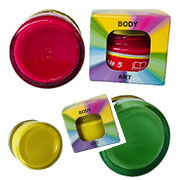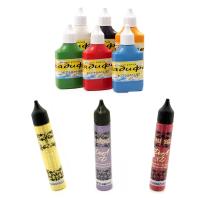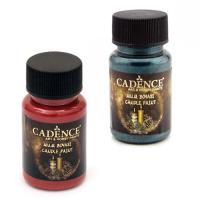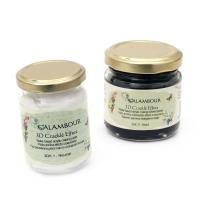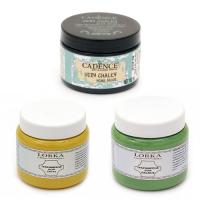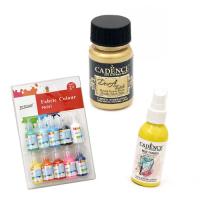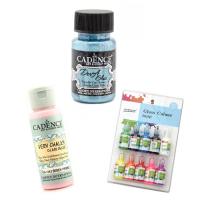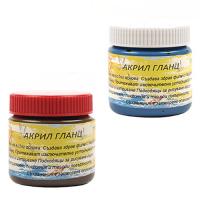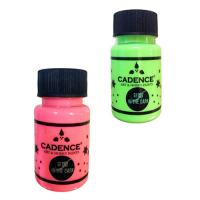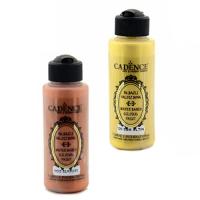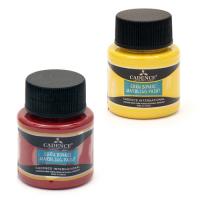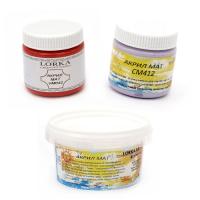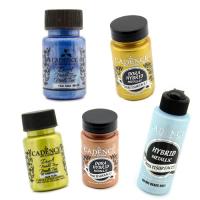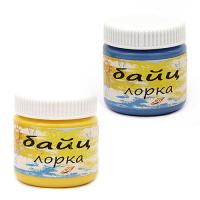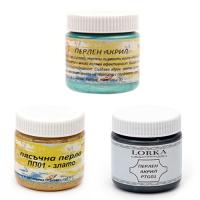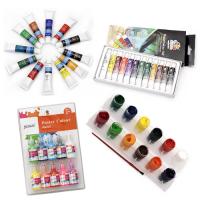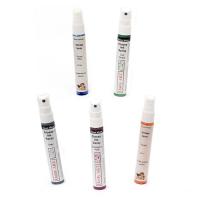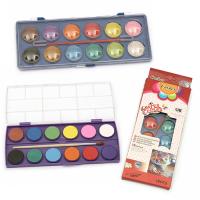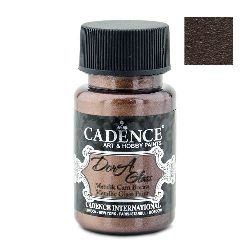Paints and Dyes for Art and Hobby

Cadence Hybrid Acrylic Paint, Oxford Green H-052, 120 ml
SKU: 842656
Weight 194 gr
Pieces: 1
Price4.80 $
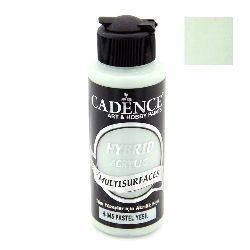
Cadence Hybrid Acrylic Paint, Pastel Green H-045, 120 ml
SKU: 842657
Weight 194 gr
Pieces: 1
Price4.80 $
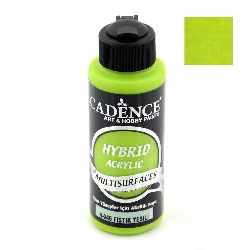
Cadence Hybrid Acrylic Paint, Pistachio Green H-046, 120 ml
SKU: 842658
Weight 194 gr
Pieces: 1
Price4.80 $

Cadence Hybrid Acrylic Paint, Powder Pink H-030, 120 ml
SKU: 842659
Weight 194 gr
Pieces: 1
Price4.80 $
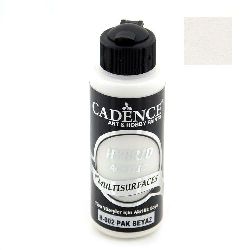
Best seller
Cadence Hybrid Acrylic Paint, Pure White, 120 ml – Multi-Surface, Non-Toxic, Quick-Drying Paint for Crafts, DIY and Home Décor on Wood, Metal, Glass, Ceramic, Plastic and Canvas
SKU: 842660
Weight 194 gr
Pieces: 1
Price4.80 $

Cadence Hybrid Acrylic Paint, Royal Blue H-037, 120 ml
SKU: 842662
Weight 194 gr
Pieces: 1
Price4.80 $

Cadence Hybrid Acrylic Paint, Slate Gray H-057, 120 ml
SKU: 842664
Weight 194 gr
Pieces: 1
Price4.80 $
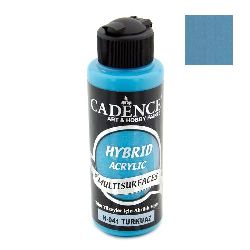
Cadence Hybrid Acrylic Paint, Turquoise H-041, 120 ml
SKU: 842666
Weight 194 gr
Pieces: 1
Price4.80 $
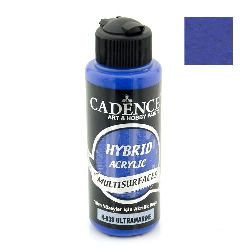
Cadence Hybrid Acrylic Paint, Ultramarine H-038, 120 ml
SKU: 842667
Weight 194 gr
Pieces: 1
Price4.80 $

Acrylic Paint, Viktoria Pink, Cadence Hybrid, 120 ml
SKU: 842668
Weight 194 gr
Pieces: 1
Price4.80 $
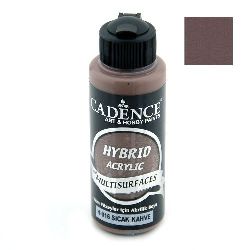
Cadence Hybrid Acrylic Paint, Warm Brown H-016, 120 ml
SKU: 842669
Weight 194 gr
Pieces: 1
Price4.80 $
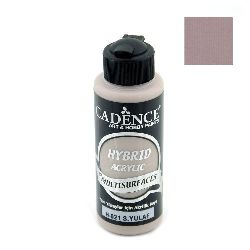
Cadence Hybrid Acrylic Paint, Warm Oat H-021, 120 ml
SKU: 842670
Weight 194 gr
Pieces: 1
Price4.80 $

Cadence Hybrid Acrylic Paint, Warm Orange H-010, 120 ml
SKU: 842671
Weight 194 gr
Pieces: 1
Price4.80 $
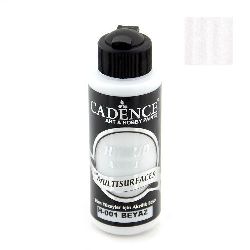
Best seller
Cadence Hybrid Acrylic Paint, White H-001, 120 ml
SKU: 842672
Weight 194 gr
Pieces: 1
Price4.80 $
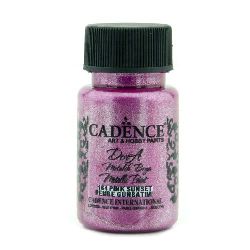
Metallic Acrylic Paint, CADENCE DORA, Pink Sunset 164, 50 ml – Shimmer Finish Craft & Hobby Paint for DIY Decorative Art on Wood, Canvas, and Paper
Decorative metallic acrylic, designed for painting and decoration on all surfaces.
SKU: 842674
Weight 75 gr
Pieces: 1
Price4.24 $
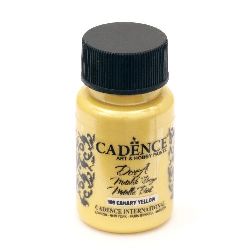
Metallic Acrylic Craft Paint, Canary Yellow 199, CADENCE DORA, 50 ml – Water-Based, Shiny Finish Decorative Paint for DIY & Hobby Projects
Decorative metallic acrylic, designed for painting and decoration on all surfaces.
SKU: 842675
Weight 75 gr
Pieces: 1
Price4.24 $

Cadence Dora Metallic Acrylic Paint 50 ml – Chartreuse 162 (Lime Green Shimmer) – Craft & Hobby Decorative Paint for DIY Art Projects
Decorative metallic acrylic, designed for painting and decoration on all surfaces.
SKU: 842676
Weight 75 gr
Pieces: 1
Price4.24 $
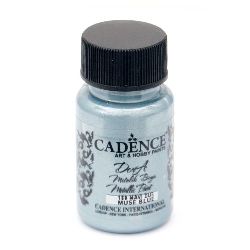
Metallic Acrylic Paint, CADENCE DORA, Muse Blue 180, 50 ml – Multi‑Surface Shimmer for Crafts, DIY, Canvas, Wood & More
Decorative metallic acrylic, designed for painting and decoration on all surfaces.
SKU: 842677
Weight 75 gr
Pieces: 1
Price4.24 $
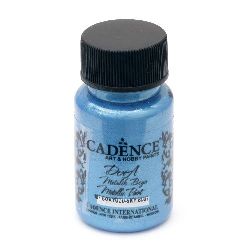
Metallic Acrylic Paint, CADENCE DORA, 50ml – Sky Blue 187 | Shimmer Metallic Finish, Multi‑Surface Craft Paint for DIY, Canvas, Wood, Paper & More
Decorative metallic acrylic, designed for painting and decoration on all surfaces.
SKU: 842678
Weight 75 gr
Pieces: 1
Price4.24 $

Cadence Dora Metallic Acrylic Paint – Vivid Green 183, 50 ml | Shimmer Craft Paint for DIY, Hobby & Decorative Projects
Decorative metallic acrylic, designed for painting and decoration on all surfaces.
SKU: 842679
Weight 75 gr
Pieces: 1
Price4.24 $

Metallic Acrylic Paint, Cadence Dora, 50 ml Bottle – Bright Orange (169) | Orange Metallic Craft Paint for Art, Hobby & DIY Projects
Decorative metallic acrylic, designed for painting and decoration on all surfaces.
SKU: 842680
Weight 75 gr
Pieces: 1
Price4.24 $
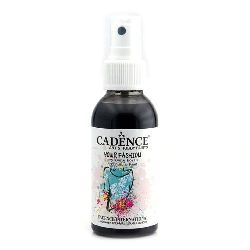
CADENCE Fabric & Textile Spray Paint, Black (1190), 100 ml – Quick-Drying, Easy-Spray Nozzle for Fabric Design, DIY & Textile Art
SKU: 842683
Weight 128 gr
Pieces: 1
Price5.61 $
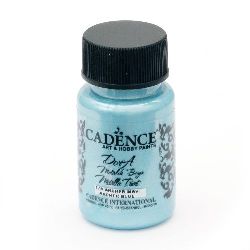
CADENCE DORA Metallic Effect Acrylic Paint – Archer Blue (179), 50 ml | Water-Based Craft Paint for DIY, Hobby & Art Projects
Decorative metallic acrylic intended for painting and decoration on any surface.
SKU: 842685
Weight 75 gr
Pieces: 1
Price4.24 $
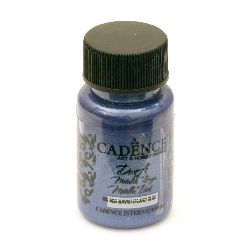
Metallic Acrylic Paint, Island Blue (195), Cadence Dora, 50 ml – Shimmering Metallic Craft Paint for Canvas, Wood, Paper & DIY Projects
Decorative metallic acrylic, designed for painting and decoration on all surfaces.
SKU: 842686
Weight 75 gr
Pieces: 1
Price4.24 $

CADENCE Dora Metallic Acrylic Paint, Maya Gold 122 (Gold-Color, Not Real Gold), 50 ml – Water-Based Craft & DIY Hobby Paint for Wood, Paper, Canvas, Ceramic and More
Decorative metallic acrylic, designed for painting and decoration on all surfaces.
SKU: 842687
Weight 75 gr
Pieces: 1
Price4.24 $

Cadence Hi-Lite Magic Acrylic Metallic Paint 70 ml – Gold Color 229 (Gold-Tone) | Hi-Lite Metallic Shine for Crafts, DIY & Art Projects
SKU: 842692
Weight 92 gr
Pieces: 1
Price4.11 $

Cadence Hi-Lite Magic Metallic Red Acrylic Paint, 70 ml Bottle (Color 349) – High-Shimmer Finish for Crafts, DIY & Hobby Projects
SKU: 842693
Weight 92 gr
Pieces: 1
Price4.11 $
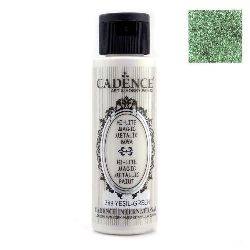
Cadence Hi-Lite Magic Metallic Acrylic Paint, 70 ml – Green 389 | Shimmering Multi-Surface Color for Canvas, Wood & Metal | Arts, Crafts & DIY
SKU: 842694
Weight 92 gr
Pieces: 1
Price4.11 $

Cadence Hi-Lite Magic Metallic Acrylic Paint, Mavi Blue 369, 70 ml – Shimmer Finish Craft Paint for Art & DIY Projects
SKU: 842695
Weight 92 gr
Pieces: 1
Price4.11 $

Magic Metallic Acrylic Paint, CADENCE HI-LITE, Orange 339 – 70 ml | Vibrant Shimmer Craft Paint for Canvas, Wood, Paper, DIY, Decoupage & Scrapbooking
SKU: 842696
Weight 92 gr
Pieces: 1
Price4.11 $

CADENCE Hi-Lite Magic Metallic Acrylic Paint, Violet 359, 70 ml – High-Quality Metallic Finish for Arts & Crafts, DIY on Canvas, Wood & Paper
SKU: 842697
Weight 92 gr
Pieces: 1
Price4.11 $
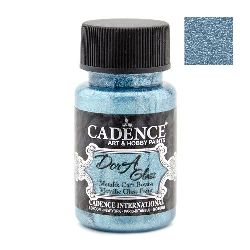
Cadence Dora Metallic Glass Paint, 50ml – Aegean Blue (3166) | Shimmer Finish for Glass Art, Bottles, Jars, Windows & DIY Crafts
SKU: 842701
Weight 76 gr
Pieces: 1
Price4.66 $
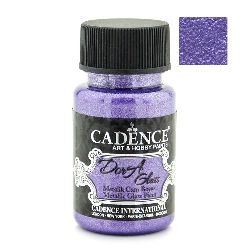
Cadence Dora Metallic Glass Paint, Amethyst (3156), 50 ml – High-Gloss, Vibrant Purple, Durable Finish for Glass Surfaces & DIY Crafts
SKU: 842702
Weight 76 gr
Pieces: 1
Price4.66 $
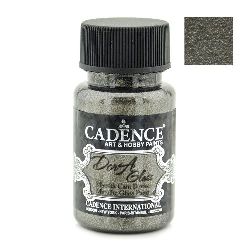
Cadence Dora Metallic Glass Paint – Anthracite 3138, 50 ml | Metallic Shimmer Finish for Glass Painting, Art Projects & DIY Crafts
SKU: 842703
Weight 76 gr
Pieces: 1
Price4.66 $
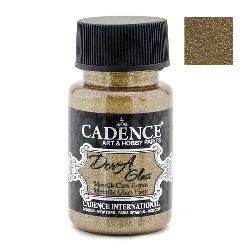
CADENCE Dora Metallic Glass Paint 50 ml – Antique Gold Color (3150), Gold‑Tone Finish for Glass Surfaces, DIY Hobby Crafts & Decorative Projects
SKU: 842704
Weight 76 gr
Pieces: 1
Price4.66 $

CADENCE Dora Metallic Glass Paint, Antique Lilac 3149, 50 ml – For Glass, Ceramic & Porcelain, DIY Crafts, Stained-Glass Effect
SKU: 842705
Weight 76 gr
Pieces: 1
Price4.66 $
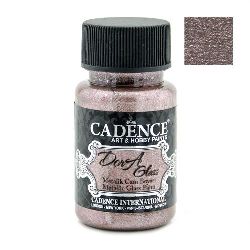
Dora Metallic Glass Paint 50 ml, CADENCE – Antique Pink 3147, Durable High-Quality Finish for Glass Surfaces, Crafts & DIY
SKU: 842706
Weight 76 gr
Pieces: 1
Price4.66 $
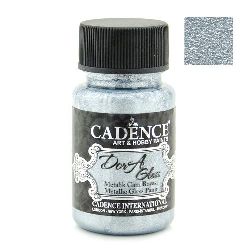
Dora Metallic Glass Paint, Aqua 3145, CADENCE – Water-Based, 50 ml, Shimmer Finish for DIY Crafts & Glass Art
SKU: 842707
Weight 76 gr
Pieces: 1
Price4.66 $
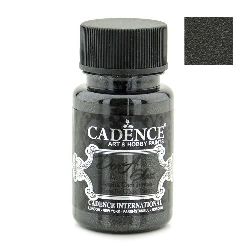
Dora Premium Glass Paint 50 ml, CADENCE – Black (3131), High-Gloss, Durable Finish for Artistic & Decorative Glass Painting
SKU: 842708
Weight 76 gr
Pieces: 1
Price4.66 $
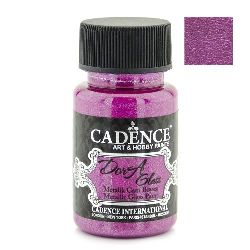
CADENCE DORA Metallic Glass Paint 50 ml – Bright Fuchsia (3155) | Shimmering, Vibrant Finish for Glass Decoration & DIY Crafts
SKU: 842709
Weight 76 gr
Pieces: 1
Price4.66 $

CADENCE Art & Hobby Paints DORA Metallic Glass Paint, Bright Maroon 3157 — 50 ml Bottle, Shimmer Finish for Glass & Decorative DIY Projects
SKU: 842710
Weight 76 gr
Pieces: 1
Price4.66 $
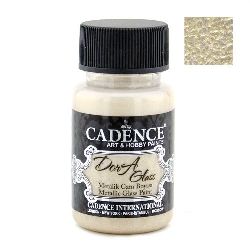
Dora Metallic Glass Paint, 50 ml, CADENCE — Champagne (Gold-Colored) 3172, Glitter Shimmer Coating for Glass & DIY Crafts
SKU: 842711
Weight 76 gr
Pieces: 1
Price4.66 $
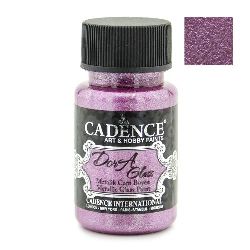
Dora Metallic Glass Paint 50 ml, CADENCE – Cyclamen 3144 (Shimmering Purple) for Glass, Porcelain & Ceramic DIY Crafts and Decorative Art
SKU: 842713
Weight 76 gr
Pieces: 1
Price4.66 $
